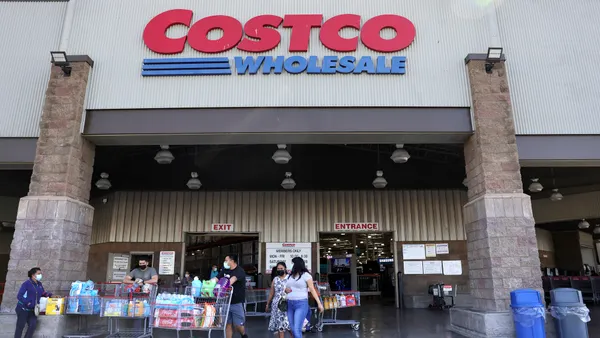Dive Brief:
-
Similar to its longtime approach to its supply chain, Wal-Mart is spending billions and developing its own technology to boost e-commerce operations, according to the Wall Street Journal. The company has acquired 15 tech companies and employed more than 3,600 tech employees at its Silicon Valley center.
-
Since 2012, its Pangaea tech project has revamped the retailer’s website and e-commerce capabilities, building new cloud infrastructure, data centers, and a search engine.
-
Most recently, the company announced it would open its OneOps cloud-storage solution to the public, making it easier to move data between cloud systems, an answer to Amazon’s formidable cloud operations, which support much of the web.
Dive Insight:
Wal-Mart Stores is infamous for its powerful supply-chain capabilities, but the retailer has had to update its approach to shift to an omnichannel model. The retailer has long employed technology, including developing its own systems, to back up its supply chain with muscle, and it’s now bringing the same approach to e-commerce.
Still, the retailer has struggled to continue to grow its web sales. In Q3, e-commerce provided 0.15% of sales growth, below the 0.3% in 2014. The retailer’s recent quarterly rebound was based squarely on its store performance; its e-commerce growth was 10%, slower than previous reports, and well below Amazon’s 23% clip, which could grow to 25%.
While Wal-Mart is experimenting with a delivery club, and its Sam's Club stores have a membership model, the retailer has eschewed a loyalty program like Amazon Prime or even a free loyalty program common among other retailers because of its perennial emphasis on "always low prices" for everyone. That means its digital operations must find a way to collect data on customers, in particular its best customers, some other way. One method is its e-receipts program, which sends receipts by email or phone, and collects data along the way.
For all these efforts, the retailer’s e-commerce approach is seen by many as supporting its vast U.S. store network — an advantage (or disadvantage, depending on your perspective) that Amazon doesn’t have.
Jason Goldberg, VP of commerce at digital marketing firm Razorfish, for example, says that Wal-Mart’s e-commerce helps to sustain and grow the wallet share of its existing store customers. Perhaps this is due in part to the difficult nature of e-commerce, he says.
“The dirty little secret of e-commerce is, it’s tough to be profitable,” he told Retail Dive earlier this year. “Especially when you add things like free shipping and free returns."
It comes down to a question of priorities. The retailer has a juggernaut of stores, which traditionally have better margins than e-commerce. E-commerce is a growth area for retail, and Wal-Mart wants to grow that sector of its business. But ultimately, Wal-Mart may have to decide which takes priority.
The shift to build out its e-commerce operations is massive and on-going, but it wasn’t enough for Wal-Mart Stores to avoid serious slowdowns in its web sales over the Black Friday weekend.














